
User manuals are crucial for helping your users understand how to use your product effectively and safely. They serve as a bridge between you and the user, ensuring your product’s features are fully utilized and potential issues are resolved quickly. While running a business, you might need to create multiple types of manuals, such as instruction manuals, troubleshooting guides, installation guides, and safety documents. Each manual addresses a specific need, ensuring that all aspects of your product use are covered.
But, creating these manuals from scratch involves extensive writing, designing, and organizing information, which can be complex and time-consuming for you. Imagine the convenience of having all the necessary document templates for user manuals in one place. It would save your time, reduce stress, and ensure consistency across all your documentation.
To make this process easier, we’ve compiled a comprehensive list of user manual templates. These templates are designed to help you create clear, effective manuals for any product.
Explore our complete blog post, where we dive deeper into the importance of user manuals, provide detailed templates, and offer tips on creating high-quality user documentation.
A user manual is a document that provides clear and comprehensive instructions on how to use a product, system, or service effectively. It is also known as an instruction manual or user guide. This document includes detailed information about operations, standards, guidelines, troubleshooting, and functionalities.
The primary purpose of a user manual is to educate your users, whether they are customers, employees, or stakeholders, about your product’s features and how to utilize them to their full potential. In short, user manuals ensure that all necessary information is available to users for the safe, efficient, and effective use of your product/service.
A user manual is essential for any business offering a product or service. Beyond helping users safely and effectively use your product, a well-created manual provides numerous benefits for your business. It enhances customer satisfaction, reduces support costs, and ensures safety. Explore the benefits of having user documentation and discover why it’s crucial for your business’s success.
Clear and precise instructions in a user manual can make using a new product a much smoother experience for your users. By fully understanding and utilizing all the product’s features, they can reduce mistakes and frustration.

A well-written manual will also guide your users through basic troubleshooting, boosting their confidence in handling the product. This not only enhances user satisfaction but also strengthens their trust in your company, knowing you care about their experience.
When dealing with products that have safety considerations, having a detailed user manual is crucial. Proper usage, maintenance tips, and safety precautions are all essential information that needs to be communicated.
Whether it’s a kitchen appliance, power tool, or electronic device, knowing how to avoid potential hazards ensures your user’s safety.
Also, a thorough manual protects your company from legal issues related to improper use, benefiting both you and the users.
A clear and comprehensive user manual can greatly reduce the need to contact customer support. When your users encounter issues or have questions, they can refer to a manual that provides the answers, saving time and frustration.

This efficiency allows your customer support teams to focus on more complex issues that can’t be resolved through the manual, ultimately improving service for everyone. It’s a win-win situation where user problems are solved quickly, and your company can better manage its resources.
Having a user manual on hand makes it easier for your users to troubleshoot and solve problems independently. Step-by-step instructions and detailed information help them identify and fix common issues without needing external help.

This way they can save time and reduce reliance on customer service. It also adds to a more satisfying user experience and a greater appreciation for the product.
Effective communication through a well-written user manual shows your company’s commitment to customer satisfaction and product quality.
When users feel supported and well-informed, their trust in the brand grows. This trust translates into loyalty, with users more likely to make repeat purchases and recommend the product to others.
Building this relationship is the key to long-term success, as satisfied customers are a company’s best advocates.
In a digital world, user manuals are often provided as digital documents, making them easily accessible for customer support, users, employees, and developers. These manuals are essential for guiding users through product features, troubleshooting, and maintenance. Here’s a complete list of 20 user manual templates to help you create clear and effective documentation for any purpose.
An instruction manual provides step-by-step guidance on using, assembling, installing, or troubleshooting a product. These manuals often include diagrams, illustrations, or photos to make the instructions easier to follow.
They also contain safety information, warnings, and precautions to protect your users from potential hazards. Whether they’re putting together furniture or learning how to use a new gadget, a good instruction manual ensures they understand how to use your product correctly and safely. An instruction manual includes:
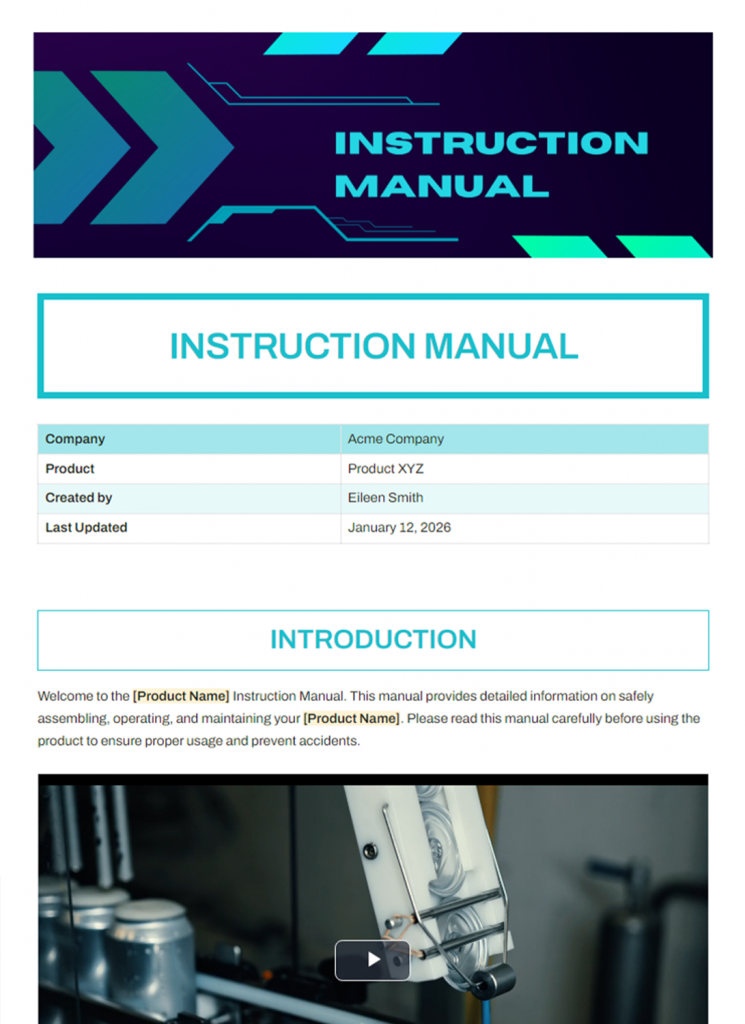

A troubleshooting guide lists common problems and offers solutions to help users fix issues with a product or process. This guide helps them identify symptoms, eliminate possible causes, and confirm that the solution restores the product to working order.
By providing clear steps to solve problems, a troubleshooting guide saves time and reduces the need for customer support. It empowers users to resolve issues quickly and effectively, enhancing their satisfaction with your product. Here’s what you need to include in a troubleshooting guide:


An installation guide provides detailed instructions to help users install, uninstall, and upgrade software or hardware. These guides outline each step of the installation process, including necessary prerequisites, hardware requirements, and any additional software needed.
By following an installation guide, your users can avoid common pitfalls and errors, ensuring a smooth setup. This helps them get the most out of your product from the start, whether it’s open-source or commercial software. Include these key elements in the installation guide for your product:
A quick start guide (QSG) is a concise set of instructions designed to help your users get started with your product or service quickly. These guides are easy to read and focus on the essential steps needed to begin using a product.
Unlike comprehensive user manuals, QSGs are brief and to the point, providing just enough information to get you up and running. This makes them particularly useful when a new user needs to start using your product right away. A well-written QSG includes:
A safety and regulatory manual outlines the necessary precautions and procedures to ensure safe usage of a product. These manuals provide instructions on how to handle the product safely, avoid injuries, and respond to emergencies.
They might also include regulatory information to ensure compliance with industry standards and laws. By following the guidelines in a safety manual, you can protect yourself and others from harm while using the product responsibly. A safety manual includes:
Maintenance manuals offer detailed instructions on how to care for and maintain a product over time. These guides include information on routine checks, cleaning procedures, and troubleshooting for common issues.
By following a maintenance manual, users can keep their product in good working condition, extend its lifespan, and ensure it continues to operate efficiently. Regular maintenance as outlined in the manual helps prevent costly repairs and downtime.
An employee handbook keeps all your company policies and procedures in one place, helping you enforce rules consistently. It includes details about the company’s vision, mission, expectations, and policies. This document acts like a virtual HR, outlining both employee rights and obligations.
Given during onboarding, it ensures that new employees understand company policies from the start. Handbooks can be provided digitally or in print, and employees typically confirm they have read it. This consistency can be crucial if legal issues arise or if an employee violates company policies. An employee handbook should have:
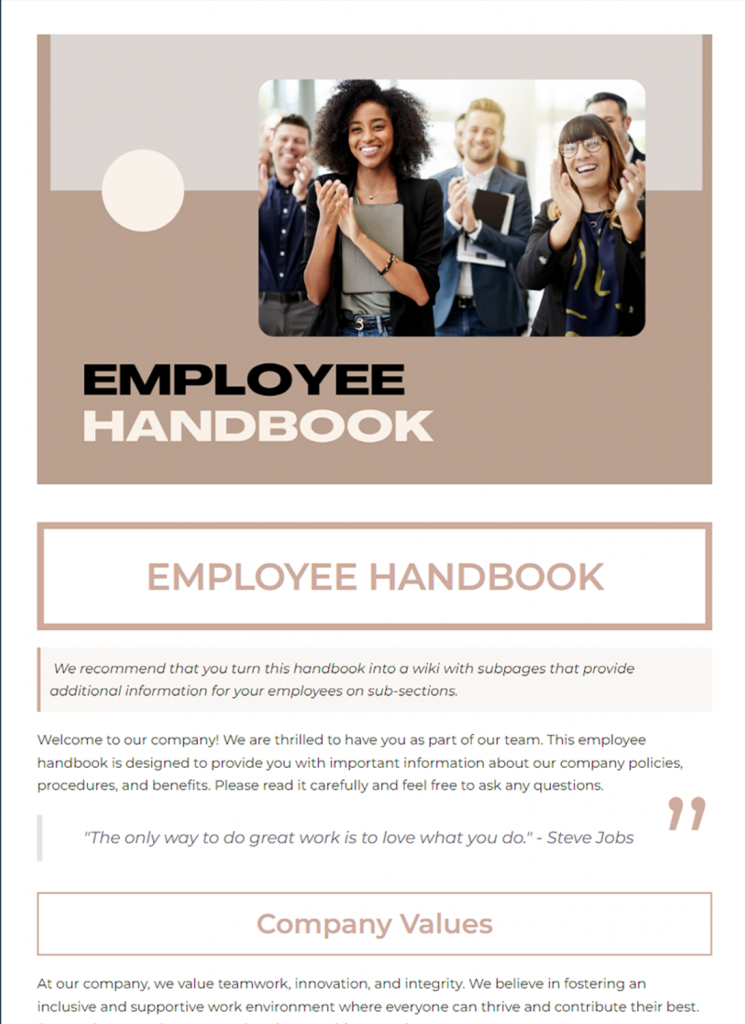

An employee training manual is a helpful resource given to employees to enhance their skills and productivity. Created by training managers, it includes relevant information, industry updates, and new skills needed for current and future tasks.
This manual serves as a guide for your employees to refer back to, ensuring they can perform their duties effectively. Improving employee capabilities ultimately benefits your organization as a whole. Key elements in an employee training manual are:
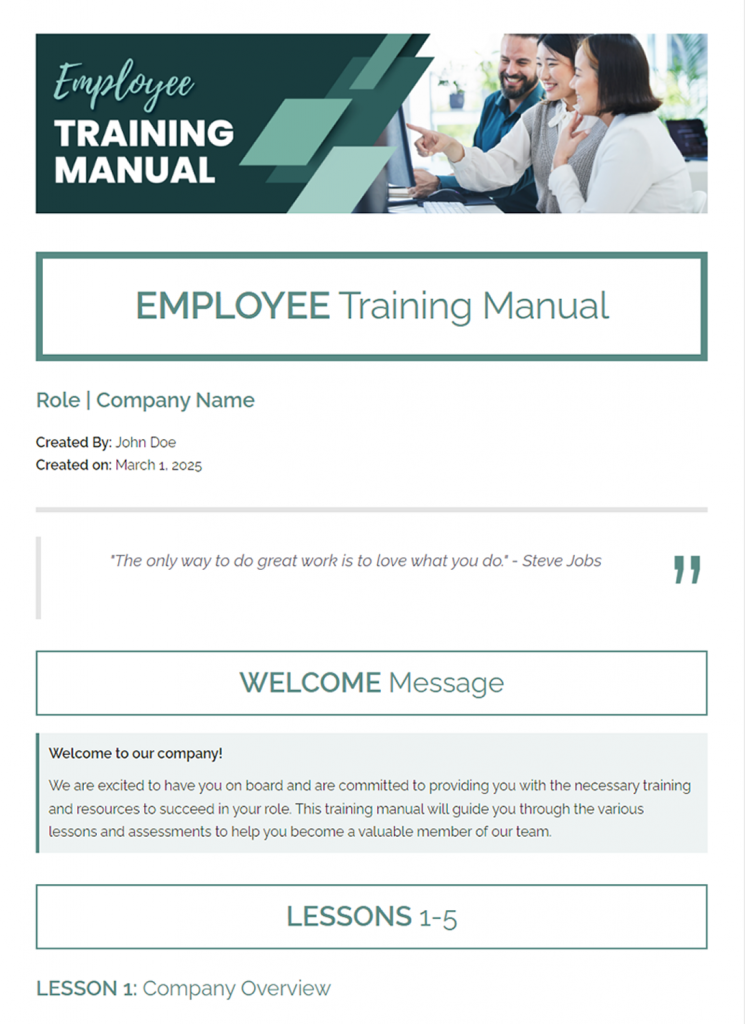

A customer service training manual equips your employees with the necessary knowledge and skills to provide excellent customer service. It covers various topics such as communication skills, problem-solving techniques, conflict resolution, product knowledge, and company policies.
This manual is essential for training new hires and enhancing the skills of your current customer service representatives. It ensures that all employees deliver consistent, high-quality service, leading to increased customer satisfaction and loyalty. A customer service training manual consists of:
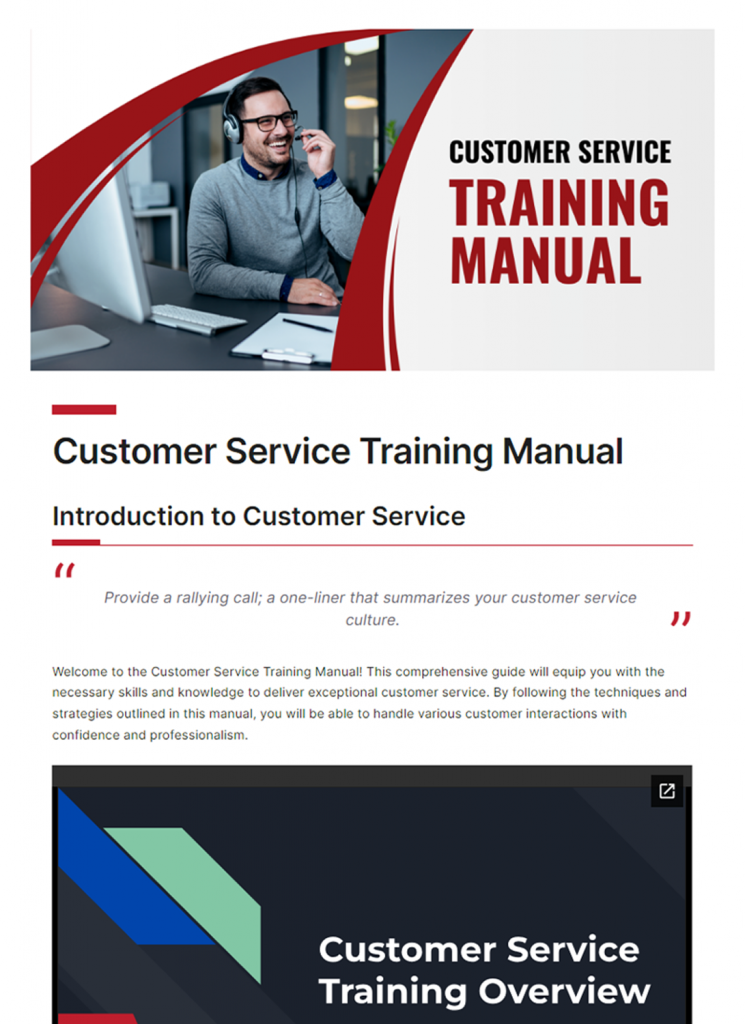

A personal user manual is a brief description of your background, values, and communication style. Each team member creates one to share with colleagues, helping everyone understand each other better.
This manual complements team-level agreements by detailing how you prefer to work and what helps you succeed. By sharing these insights, team members can collaborate more effectively, fostering a supportive and productive work environment. Key elements of a personal user manual include:
A company fact sheet provides a concise overview of key information about your business. It highlights important facts and statistics, helping readers quickly understand your company. Fact sheets are versatile and can be used for marketing, PR, or business meetings.
They save time by summarizing essential details for employees, potential investors, clients, or the media. Tailoring the fact sheet to your target audience ensures it contains the most relevant information. A company fact sheet must contain the following elements:
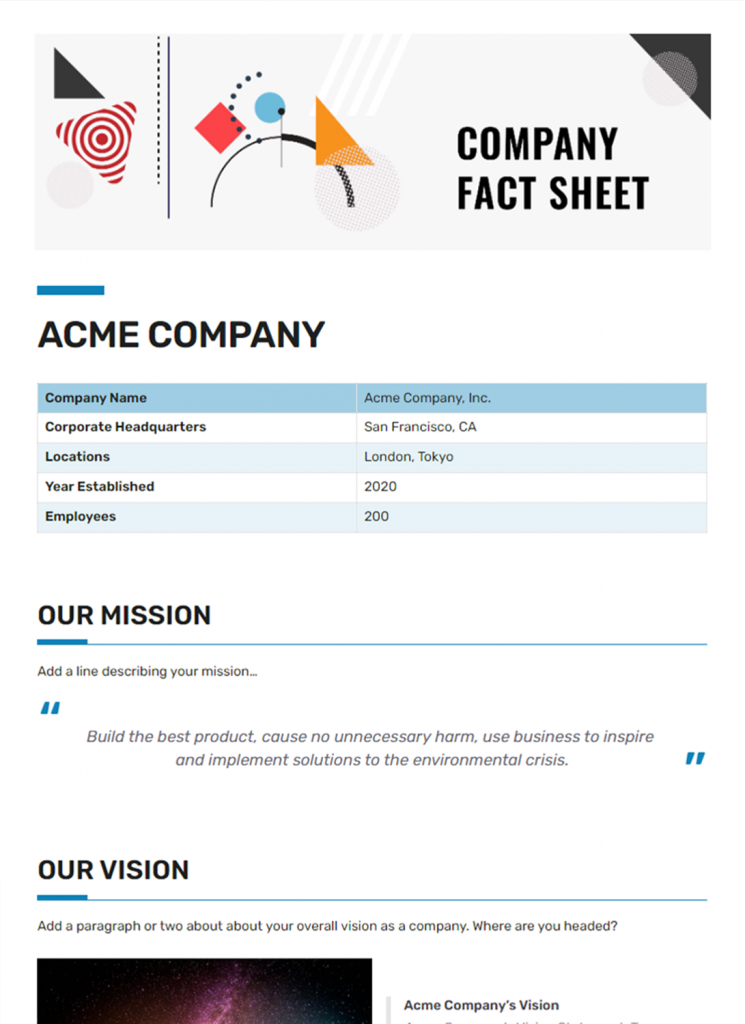

A customer service policy guides how your employees and organization approach customer service. It may be an internal code of conduct or a publicly shared document, setting expectations for high-quality service.
This policy ensures consistent customer interactions, fostering trust and satisfaction. By clearly outlining service standards, it helps employees understand their roles in delivering exceptional customer experiences. A customer service policy features the following items:
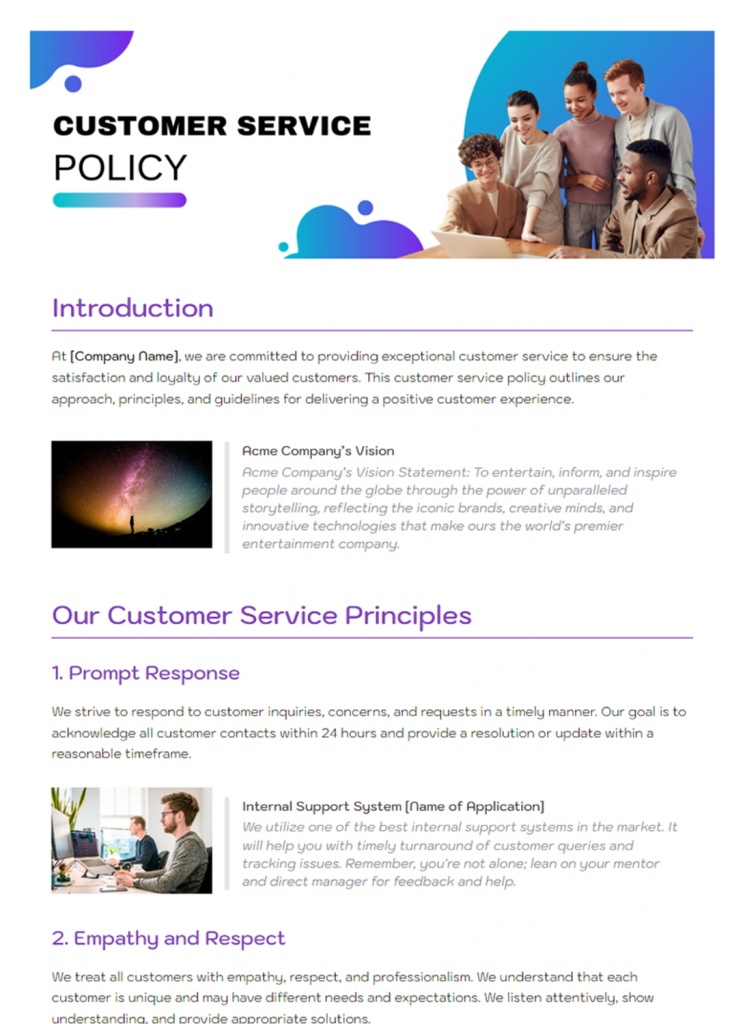

A sales playbook is a document that outlines best practices, tactics, and strategies for various stages of the sales process. It provides your sales teams with guidance on what to do in specific situations, such as prospecting, nurturing leads, or pitching products.
By following the playbook, sales reps can improve their effectiveness and close more deals. This tool ensures a consistent approach across the sales team, leading to better performance and results. The contents of a sales playbook are as follows:
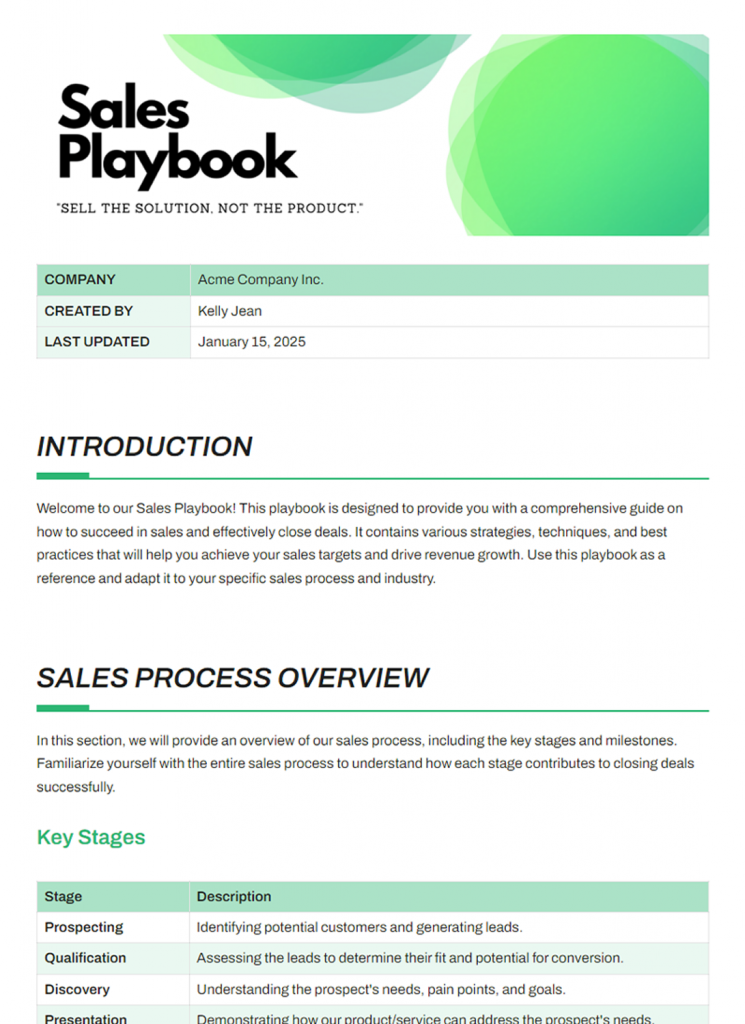

A Standard Operating Procedure (SOP) manual describes the activities needed to complete tasks according to industry regulations and company standards. SOPs detail expected practices in businesses where quality is crucial, covering operations, marketing, and administration.
They serve as “how-to” guides for maintaining consistency and ensuring tasks are done correctly. SOPs help small businesses achieve success by providing clear instructions and maintaining high standards. An SOP has the following components:
Process documentation captures every step involved in completing a task within your business. For instance, it might detail how to transition data from legacy servers to the cloud. This documentation can take various forms, such as policies, tutorials, or flowcharts, and might be included in business plans, company handbooks, training manuals, or cloud-based SOPs.
Ideally, process documentation should happen in real-time as employees perform the task, ensuring accuracy and completeness. By documenting each step, you can ensure consistency, efficiency, and a clear reference for training and troubleshooting. Essential components of a process documentation are:
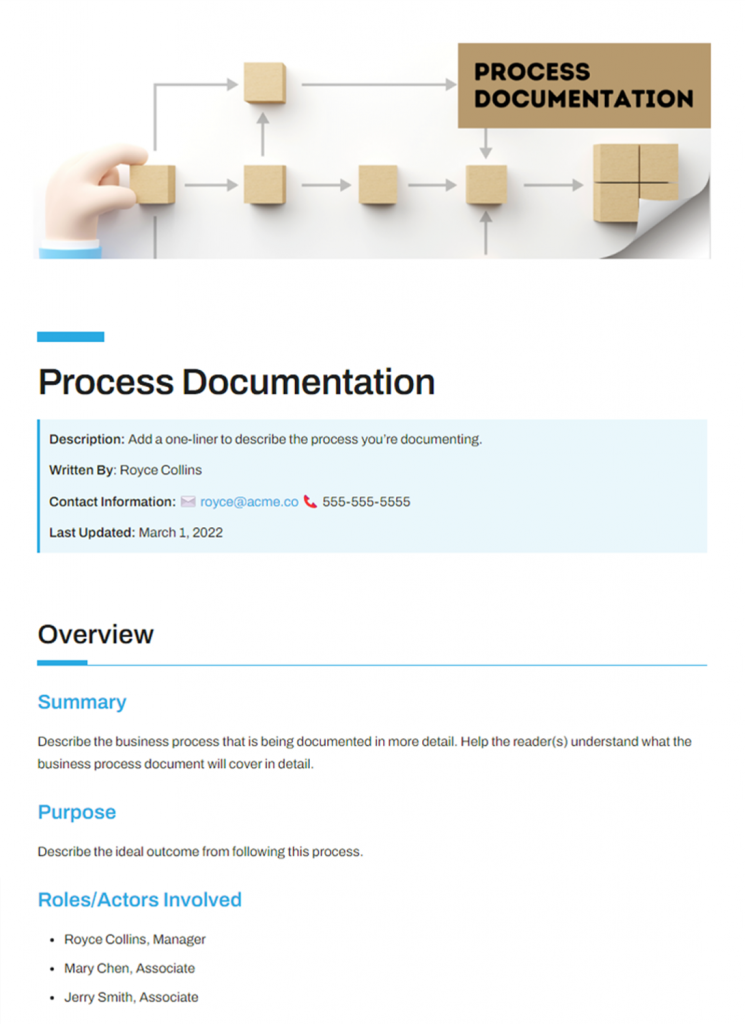

A software requirement document outlines what a software product will do and how it will perform. It includes the product’s functionality, design, and standards to meet the needs of all stakeholders, including business and end-users. The software requirement details the high-level business requirements, user needs, and technical specifications.
Essentially, it provides a comprehensive description of how the software should work and guides the development team in building the product to meet those specifications. Important elements of a software requirement document include:
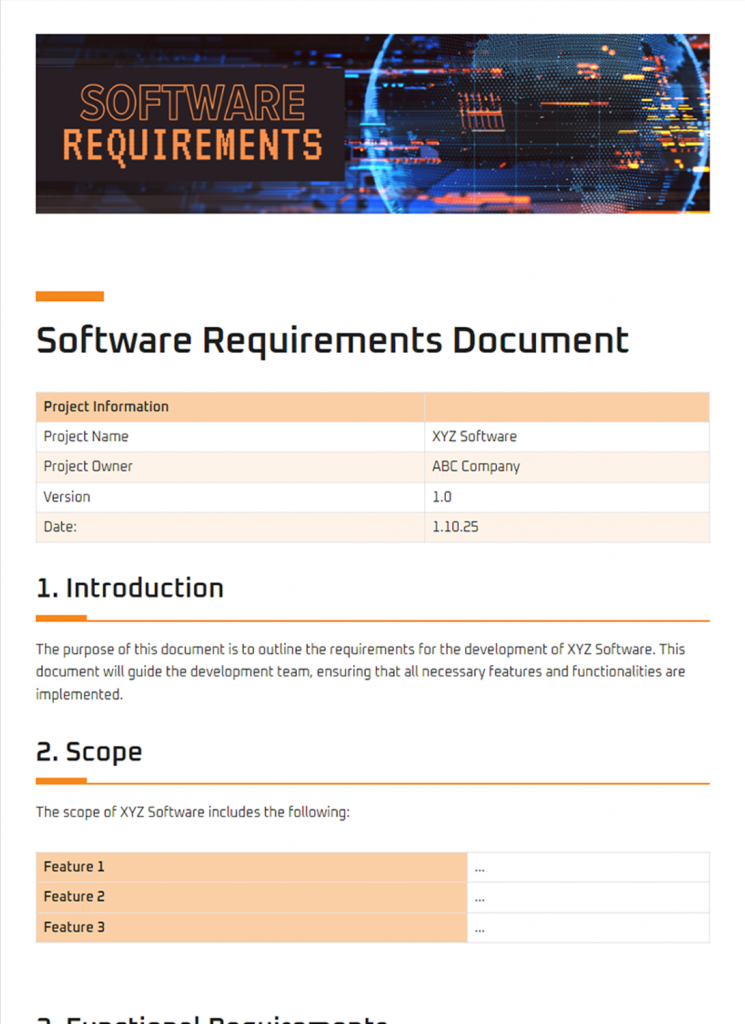

Release notes are technical documents distributed with new software products or updates, detailing recent changes, feature enhancements, or bug fixes. Created primarily by product managers, these notes are intended for users but can also be used internally.
They provide concise information about what’s new or changed in the product, helping users understand updates without replacing user guides or other in-depth documentation. Release notes keep users informed and help them take advantage of new features and improvements. Key elements of a release notes are:
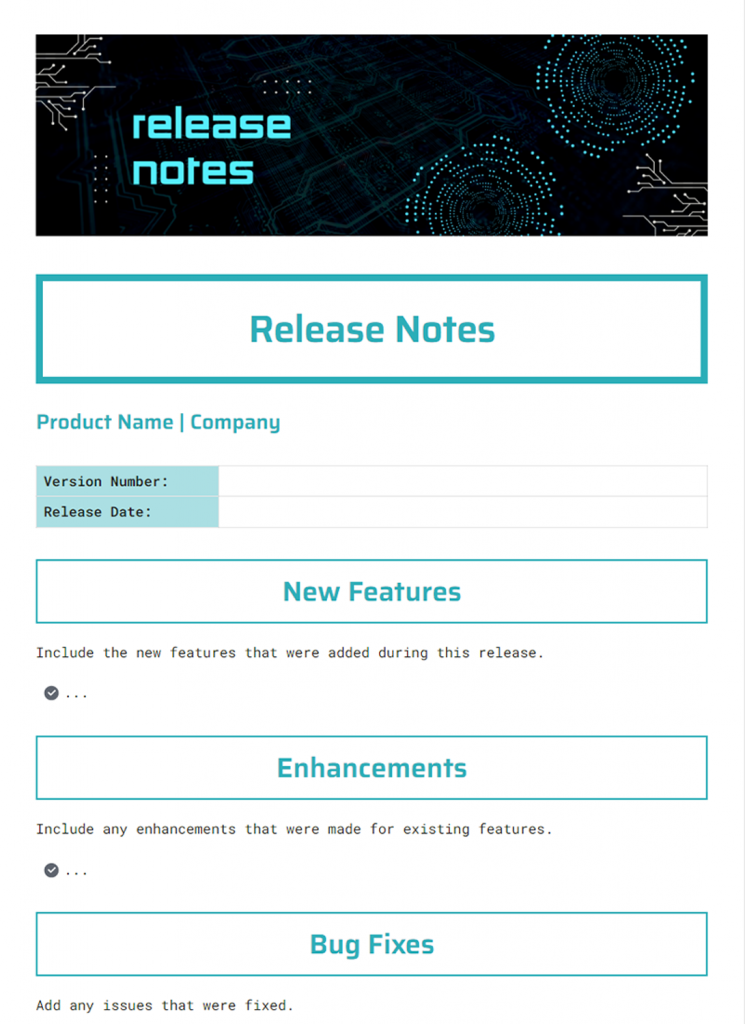

Software design documentation describes the architecture and components of a software product, outlining how it will be built. Written by software engineers or project managers, these documents provide a detailed overview of the design model, including specific functionalities and interactions between components.
This documentation guides the development team, ensuring everyone understands what needs to be created and how. By providing a clear blueprint through SDD, you can maintain consistency and quality throughout the development process. Core aspects of a software design documentation include:
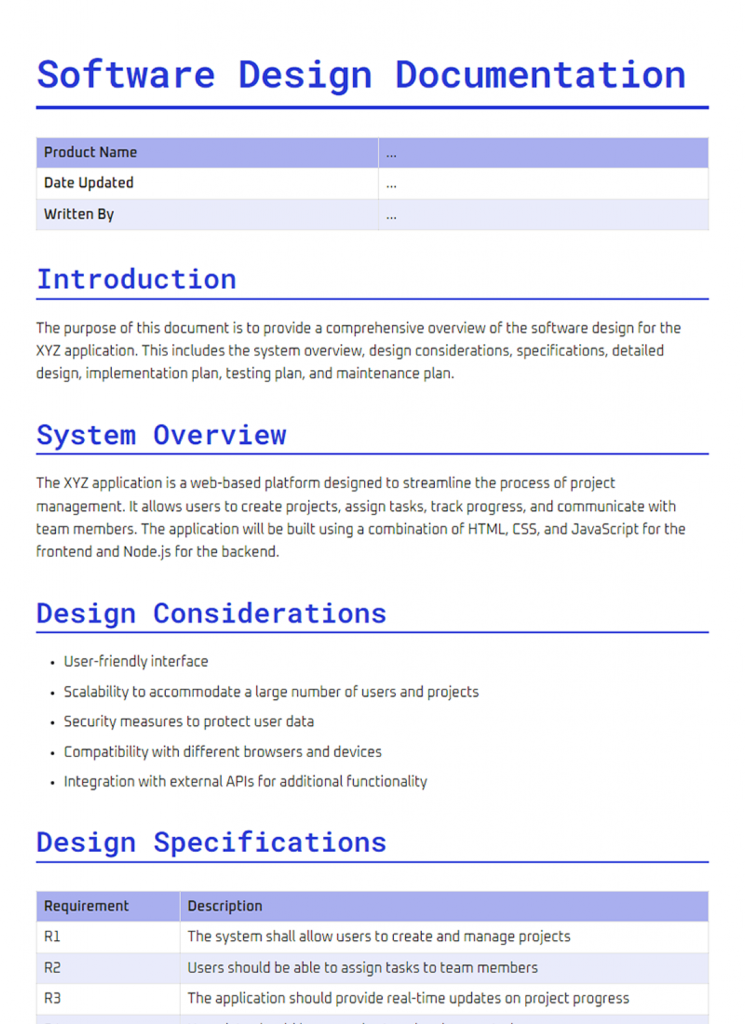

A product requirements document (PRD) communicates the essential capabilities that must be included in a product release to the development and testing teams. It outlines everything necessary for the release to be considered complete, guiding the creation of subsequent documents in the release process.
The PRD ensures that all stakeholders are aligned on the product’s goals and features. This facilitates a smooth development cycle and helps your teams deliver a product that meets expectations. Here’s what you must add in your product requirement document:


API documentation, or API docs, includes references, tutorials, and examples to help developers use an API effectively. It serves as the primary resource for explaining the API’s capabilities and how to get started. This documentation often includes tutorials, code examples, and detailed explanations of syntax and functionality.
High-quality API docs provide clear answers and guidance, making it easier for developers and users to integrate and use the API in their applications, thus ensuring a better developer experience and more efficient usage of the API. Add these details in your API documentation:


Reaching the end of our discussion, it’s clear how vital user manuals are. In the blog post, we’ve explored what a user manual is, its numerous benefits, and introduced you to 20 top-notch user manual templates. You’ve gained valuable insights into creating effective documentation that enhances user experience and simplifies support.
Now it’s time to take action. Use these templates to create amazing user documents for your products, processes, and services. Remember to keep instructions clear, use visuals where possible, and always test your manuals with real users for feedback. Ready to transform your user documentation? Dive in and start creating now!
Further Reads: